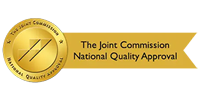Communication encompasses both verbal and non-verbal cues, and is fundamental to effective adolescent psychotherapy. Adolescents often have a difficult time accurately articulating their emotions, which can make communicating with young people rather complicated.
When working with adolescents, mental health professionals often rely on certain therapeutic communication techniques, some of which include the following examples provided by the National Center on the Sexual Behavior of Youth:
- Model using non-judgmental words to describe behaviors: Language can make a big difference in how adolescents think about themselves and react to feedback.
- Active listening: This involves the therapist providing the adolescent with their undivided attention and keeping distractions to a minimum.
- Repeat from time to time: In repeating back a paraphrased version of what the child had shared, a therapist demonstrates that they have accurately heard and correctly understand the adolescent’s perspective.
- Open-ended questions: This technique can help young people learn to provide a bit more thought to their responses as it requires them to formulate a detailed answer rather than simply reply with a ‘yes’ or ‘no,’ which promote self-expression.
- Practice conflict resolution: Effectively navigating conflict is an essential life skill, and for some cultivating this skill does not come easily. A therapist may provide different exercises for a child to hone this skill in an emotionally safe and controlled environment.
- Mindfulness exercises: The Mayo Clinic explains that the practice of mindfulness involves focusing on “being intensely aware of what you’re sensing and feeling in the moment without interpretation or judgment.” Practicing mindfulness techniques (e.g., meditation, deep breathing, visualization, etc.) during therapy sessions can help increase one’s ability to regulate emotions which can foster authentic communication.
- Validate: Young people need and benefit from validation because adolescence is filled with experiences of invalidation. Acknowledging and validating a child’s perspective can help strengthen the therapeutic alliance.
There is a myriad of communication techniques that may be used in adolescent therapy. The various communication skills focused on will differ with each child, as they will be directly informed by each young person’s needs, concerns, and treatment goals, and the areas of focus will likely shift throughout the therapeutic process.
Further Information and Support
For most of us, life can be very stressful, leading us to feel emotionally charged, which can cause anxiety, panic attacks, depression, and getting stuck in a cycle of being burdened with negative thoughts. Navigating through the challenges and emotional turmoil of life can be overwhelming, but you do not have to go through it alone. Engage Treatment is a Joint Commission Accredited professional psychological practice. We specialize in treating children, teens, and young adults struggling with depression and anxiety through community-focused treatment plans that incorporate a carefully selected combination of therapeutic interventions. Our compassionate, multidisciplinary practitioners are devoted to providing the highest quality of care that helps ignite positive change and enables clients to reach optimal health and well-being. Please do not hesitate to reach out for guidance. We are happy to answer questions and provide you with any additional information. Feel free to call us at 805-497-0605 or email us at [email protected]. You are also welcomed to get in touch by filling out our contact form. We look forward to connecting and having the opportunity to discuss how we might best be able to support you.
Contact Us
Westlake Campus:
IOP Program
2625 Townsgate Road, Suite 210
Westlake Village, California 91361
Agoura Campus:
Private Therapy & Parenting Program
30300 Agoura Road, Suite 250
Agoura Hills, CA 91301
805-497-0605
805-371-4862











© 2023 Engage Treatment Program, Inc. All Rights Reserved.
LGBTQ Friendly
About
• About Engage
• Our Team
• Career Opportunities
• Individual / Family Therapy






